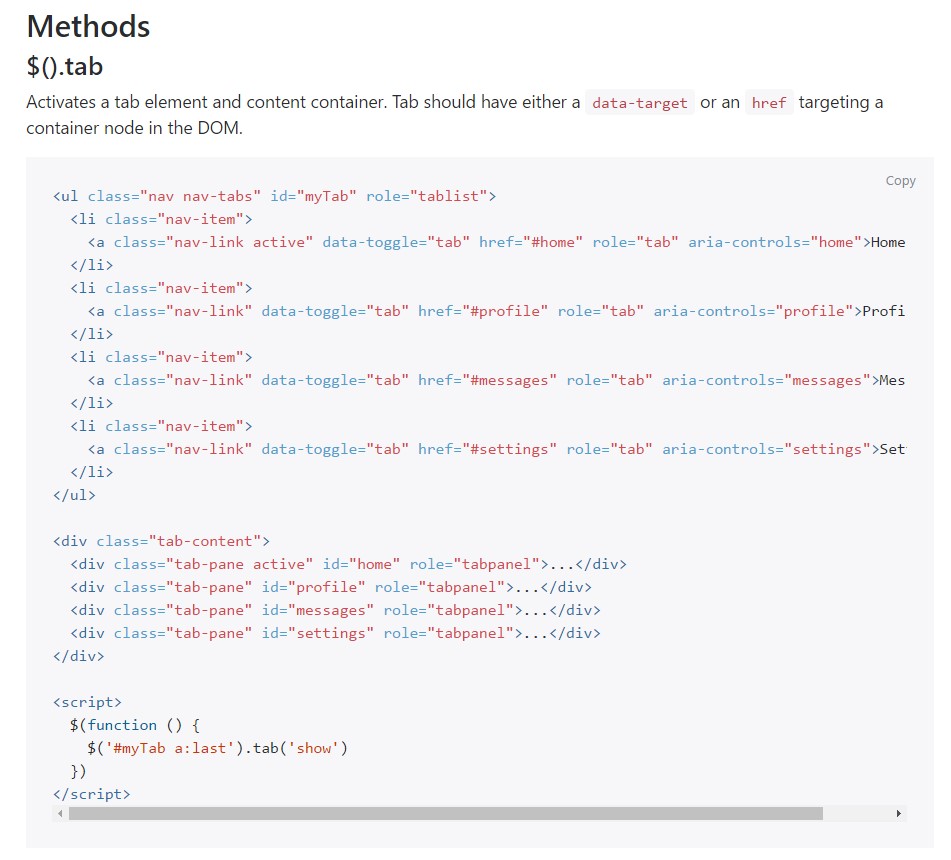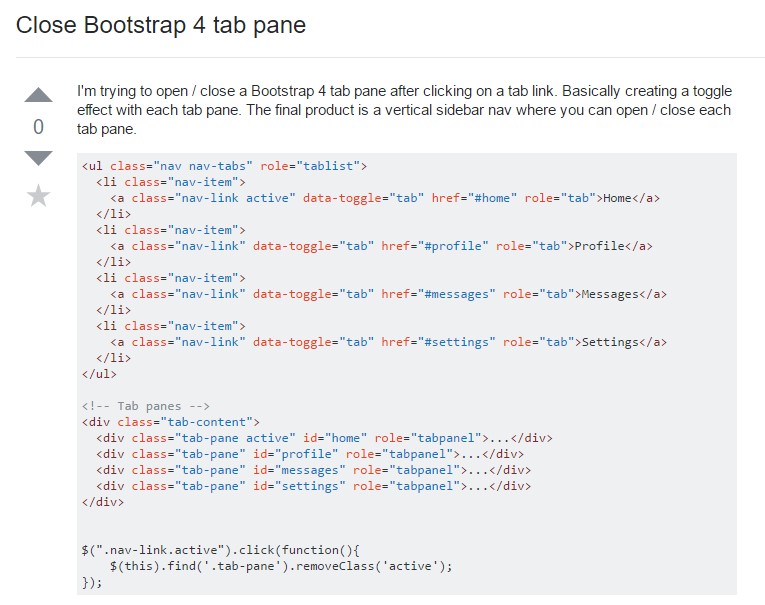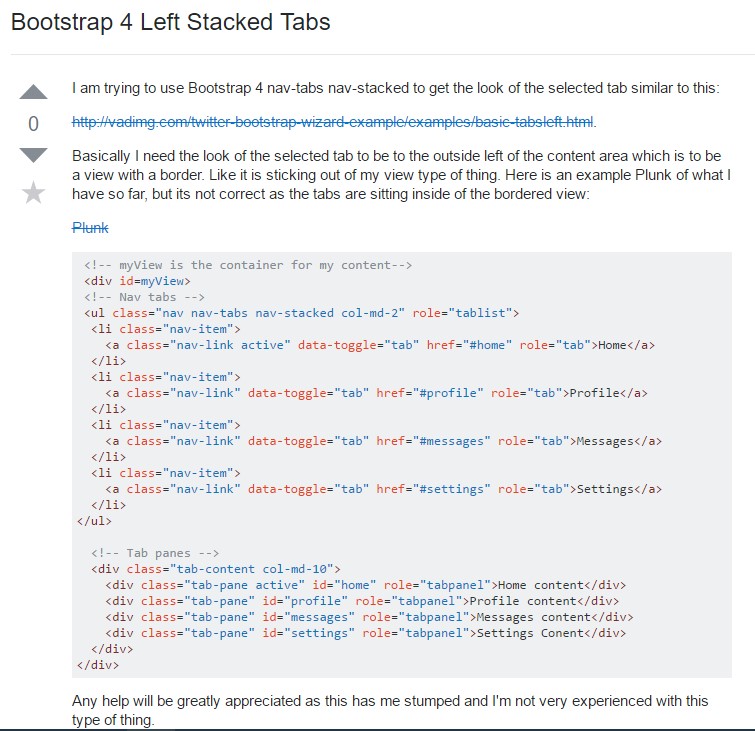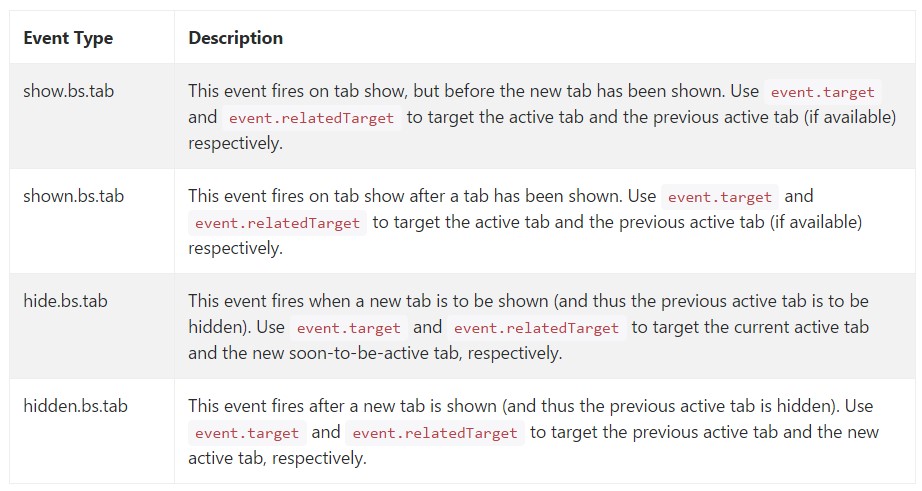Bootstrap Tabs Border
Intro
In certain cases it is actually quite handy if we can just put a few sections of information sharing the very same area on page so the visitor simply could surf through them without really leaving the display. This becomes quite easily realized in the brand new fourth edition of the Bootstrap framework with the aid of the
.nav.tab- *Tips on how to use the Bootstrap Tabs Styles:
Firstly for our tabbed section we'll need to have several tabs. In order to get one generate an
<ul>.nav.nav-tabs<li>.nav-item.nav-link.activedata-toggle = “tab”href = “#MyPanel-ID”What is simply new within the Bootstrap 4 system are the
.nav-item.nav-link.active<li>Now as soon as the Bootstrap Tabs Events structure has been simply made it's opportunity for making the control panels holding the actual content to be featured. First we want a master wrapper
<div>.tab-content.tab-pane.fade.active.in.fade.tab-panelid = ”#MyPanel-ID”You can easily additionally set up tabbed panels applying a button-- like appeal for the tabs themselves. These are also indicated as pills. To accomplish it simply make certain as an alternative to
.nav-tabs.nav-pills.nav.nav-linkdata-toggle = “pill”data-toggle = “tab”Nav-tabs ways
$().tab
$().tabTurns on a tab feature and web content container. Tab should have either a
data-targethref<ul class="nav nav-tabs" id="myTab" role="tablist">
<li class="nav-item">
<a class="nav-link active" data-toggle="tab" href="#home" role="tab" aria-controls="home">Home</a>
</li>
<li class="nav-item">
<a class="nav-link" data-toggle="tab" href="#profile" role="tab" aria-controls="profile">Profile</a>
</li>
<li class="nav-item">
<a class="nav-link" data-toggle="tab" href="#messages" role="tab" aria-controls="messages">Messages</a>
</li>
<li class="nav-item">
<a class="nav-link" data-toggle="tab" href="#settings" role="tab" aria-controls="settings">Settings</a>
</li>
</ul>
<div class="tab-content">
<div class="tab-pane active" id="home" role="tabpanel">...</div>
<div class="tab-pane" id="profile" role="tabpanel">...</div>
<div class="tab-pane" id="messages" role="tabpanel">...</div>
<div class="tab-pane" id="settings" role="tabpanel">...</div>
</div>
<script>
$(function ()
$('#myTab a:last').tab('show')
)
</script>.tab(‘show’)
.tab(‘show’)Picks the delivered tab and shows its own involved pane. Other tab that was formerly chosen comes to be unselected and its linked pane is covered. Turns to the caller before the tab pane has really been presented ( id est before the
shown.bs.tab$('#someTab').tab('show')Occasions
When demonstrating a brand new tab, the events fire in the following order:
1.
hide.bs.tab2.
show.bs.tab3.
hidden.bs.tabhide.bs.tab4.
shown.bs.tabshow.bs.tabAssuming that no tab was currently active, then the
hide.bs.tabhidden.bs.tab$('a[data-toggle="tab"]').on('shown.bs.tab', function (e)
e.target // newly activated tab
e.relatedTarget // previous active tab
)Final thoughts
Well primarily that is actually the manner the tabbed panels get generated by using the newest Bootstrap 4 edition. A thing to pay attention for when setting up them is that the different elements wrapped within each and every tab control panel must be practically the similar size. This will help you stay away from some "jumpy" behaviour of your webpage when it has been already scrolled to a certain placement, the visitor has begun searching via the tabs and at a specific moment gets to launch a tab together with significantly extra content then the one being actually noticed right before it.
Look at a couple of video tutorials regarding Bootstrap tabs:
Linked topics:
Bootstrap Nav-tabs: main information

How you can close up Bootstrap 4 tab pane

Bootstrap 4 Left Stacked Tabs


